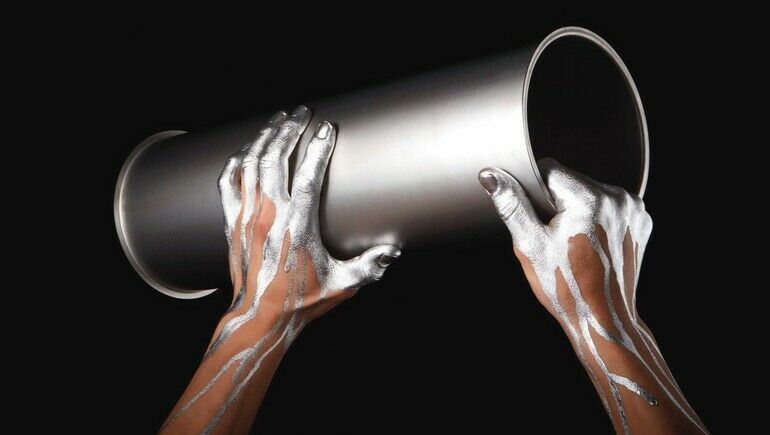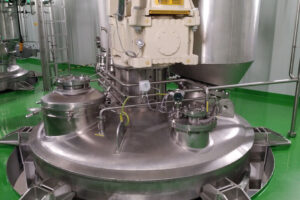With immediate effect, KMH also supplies its products with a high-quality stainless steel finish. The basis for this is a blasting medium specially developed by experts. In order to achieve the optimum surface quality, edged structures have been completely avoided. In addition, only high-alloy stainless steel grit is used. With this finishing process, the stainless steel surfaces achieve surface roughnesses of maximum Ra 0.8 μm. The only exceptions are in the seam area, depending on accessibility. The low surface roughness was tested by BK Werkstofftechnik – Prüfstelle für Werkstoffe GmbH, Bremen.
Easy to clean
The low surface roughness has clear advantages, especially in terms of hygiene: the refined stainless steel surface meets the hygiene requirements in the food and pharmaceutical industries. The reduced adhesion of residual dirt and micro-organisms makes cleaning the pipe system much easier.
More corrosion-resistant pipes
The cold-hardened surfaces blasted with stainless steel impress with their high resistance and durability. Blasting with very fine balls produces less surface abrasion compared to other processes. This also reduces wear and increases the service life of the products.
Corrosion also has little chance with the new surfaces: due to the minimally invasive impact on the surfaces, there is hardly any stress corrosion. Thus, the material structure is hardly changed by the blasting process.
Last but not least, in modern production and processing facilities, the visual appearance is also a decisive factor in the perception of quality. The stainless steel blasting process developed at KMH ensures a high-quality, matt-silk shine. Machining marks, tarnishing and oxide deposits are reliably removed – the appearance is harmonious all round.
Sustainable all along the line
The blasting process with stainless steel offered by KMH is a good choice in terms of sustainability for several reasons: the separated material goes back into the cycle, i.e. it is reused. The harder surfaces ensure longer-lasting products, which not only adds value monetarily, but also ecologically. In addition, by insourcing the finishing process, transport distances are reduced and the CO2 footprint of the products is smaller.
Originally from prozesstechnik-online.de, translated with www.DeepL.com/Translator (free version)









